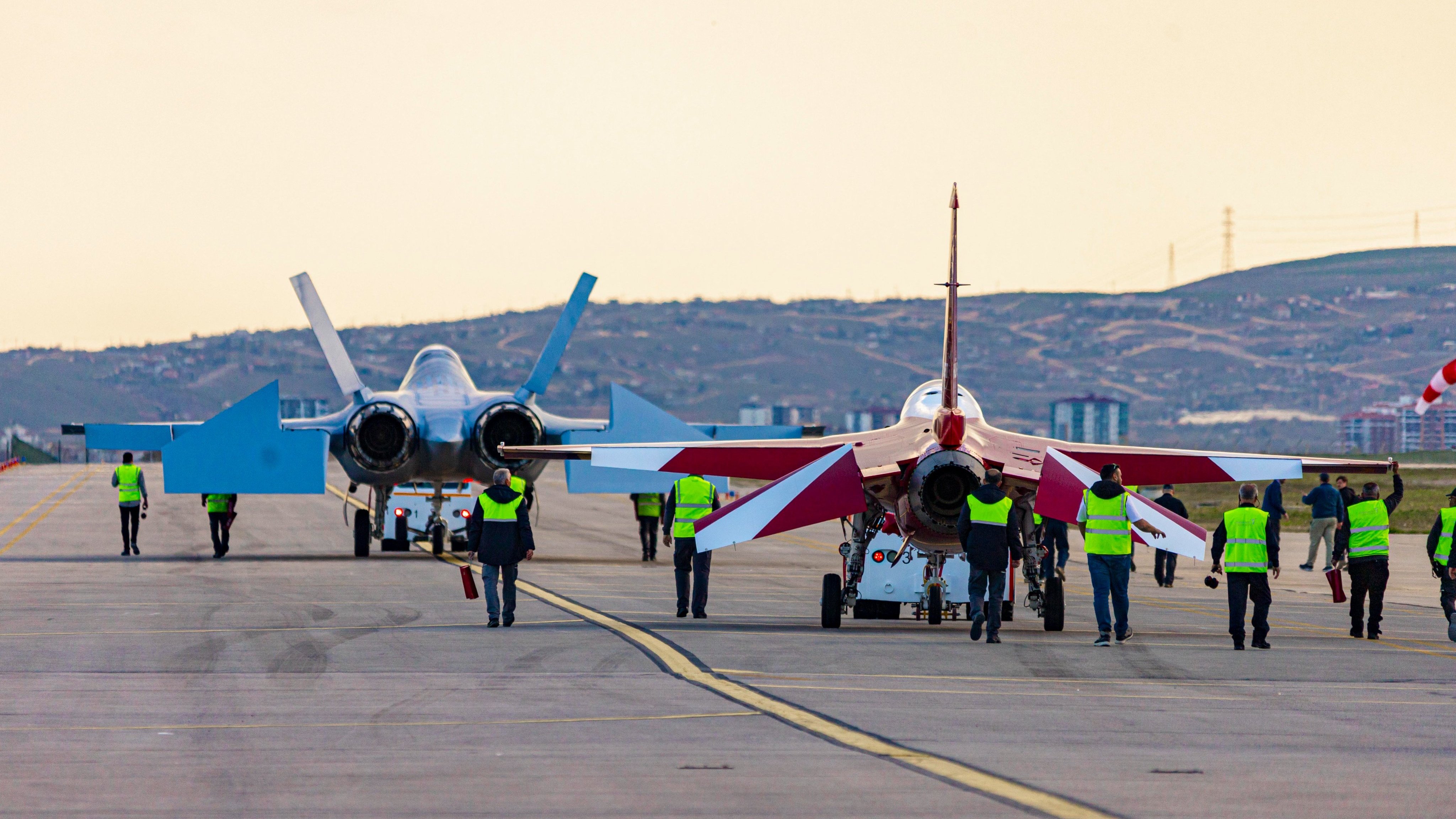dBSPL
SENIOR MEMBER

- Joined
- Mar 2, 2018
- Messages
- 7,661
- Reaction score
- 28
- Country
- Location
A fanart concept drawing featuring TCG Trakya, Istif B-II, Hürjet-Naval, KE-I and TB-3.


Follow along with the video below to see how to install our site as a web app on your home screen.
Note: This feature may not be available in some browsers.




Over the next 4-6 years, the aircraft will undergo thousands of tests both on the ground (iron-bird) and in the air. So we will continue to see pitot/measurement tubes on prototype for a long time to come. However, we can say that this is the geometry for Block-1. The nose cone is 15-20 percent larger than the F-22, maybe more, in a one-to-one comparison. This is actually an important indicator in terms of the electronic capabilities targeted on the aircraft. The ultimate goal for the aircraft is 2x 38K pound engines and as you can see, it has a huge internal volume, so the aircraft is suitable for expansion in this sense. KAAN will essentially be a AEW-C like aircraft. I mean, it will operate together with many unmanned systems.Build quality is immaculate - even more when you consider this is the first prototype and the manufacturing process has yet to go through that refinement process you expect from prototype to serial production.

Over the next 4-6 years, the aircraft will undergo thousands of tests both on the ground (iron-bird) and in the air. So we will continue to see pitot/measurement tubes on prototype for a long time to come. However, we can say that this is the geometry for Block-1. The nose cone is 15-20 percent larger than the F-22, maybe more, in a one-to-one comparison. This is actually an important indicator in terms of the electronic capabilities targeted on the aircraft. The ultimate goal for the aircraft is 2x 38K pound engines and as you can see, it has a huge internal volume, so the aircraft is suitable for expansion in this sense. KAAN will essentially be a AEW-C like aircraft. I mean, it will operate together with many unmanned systems.
In terms of production quality, TAI's Structurals division, as you already know, is one of the highest standard production facilities in the world, a supplier to Boeing, Airbus and Lockheed, and for many years was the only non-US manufacturer of the F-35 mid-fuselage. So this is not a surprise. The KAAN project, by the way, continues to have the possibility of becoming multinational. At the moment, Malaysia is the closest country to reaching an agreement.




New Recruit


